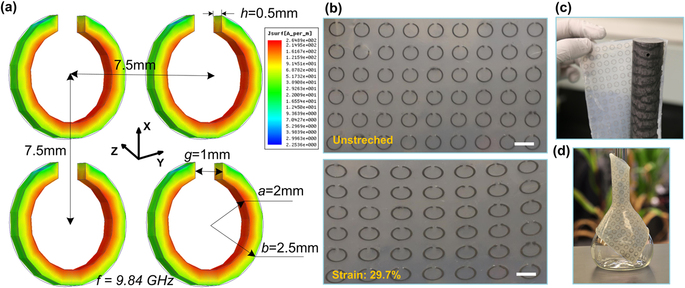
Under the Radar
Iowa State University researchers have managed to create a material made of liquid metal that could provide a new kind of camouflage, rendering objects invisible under certain conditions.
The material is comprised of tech that is embedded in a flexible sheet of silicon. Each ring is filled with liquid metal galinstan that covers the entire surface of the material, working as electrical inductors, while the gaps in between them act as capacitors.
This means that if a radar wave of the correct frequency hits its surface, it can be absorbed by the film.
The paper, published in Scientific Reports, explains: “The meta-skin is composed of an array of liquid metallic split ring resonators (SRRs) embedded in a stretchable elastomer. When stretched, the meta-skin performs as a tunable frequency selective surface with a wide resonance frequency tuning range. When wrapped around a curved dielectric material, the meta-skin functions as a flexible ‘cloaking’ surface to significantly suppress scattering from the surface of the dielectric material along different directions.”
But what happens when the radar wave doesn’t follow the geometry of the rings?
The material’s flexibility allows it to be shaped and formed so that it can absorb varying signals. According to the team, the same sheet of material can effectively absorb 75 percent of radar signals from 8 and 10 gigahertz.

Invisibility Cloak
Here comes the most interesting bit: According to the team, this kind of meta-skin technology will have numerous applications specifically for electromagnetic frequency tuning, shielding, and scattering suppression. In other words, it can also help cloak light (which, of course, is how our eyes are able to see objects).
“This meta-skin technology is different from traditional stealth technologies that often only reduce the backscattering, i.e., the power reflected back to a probing radar,” the paper said.
Future applications of this flexible and stretchable material could mean effectively coating the surface of stealth aircrafts and eventually expanding the film’s ‘cloaking’ properties to include higher frequency electromagnetic waves, infrared, and even visible light—creating optical cloaking material (though this would necessitate operations on the nanoscale, which is a difficult and delicate matter).